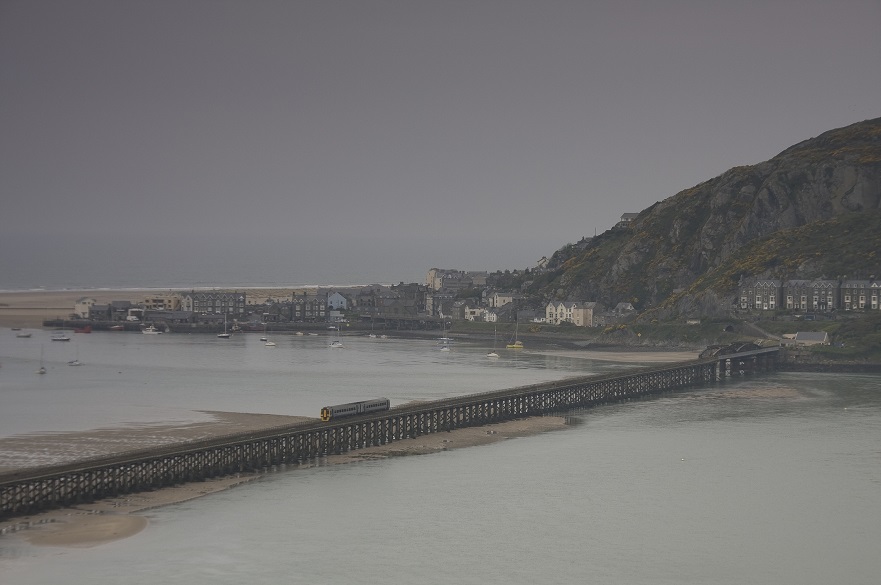Climate change threatening important estuaries, researchers warn
A combination of rising sea levels, lower river flows and man-made barriers such as weirs, sluices and dams, are putting estuaries at risk, researchers have warned.
By Dave Rogers | Published on 21 November 2022
Categories: Press office; Research; School of Animal, Rural and Environmental Sciences;

Environmental scientists at Nottingham Trent University have reported for the first time that important tidal freshwater zones in estuaries are being squeezed out and lost against these hard barriers as climate change causes saltwater from the sea to move further inland and river flows reduce.
Estuaries are bodies of water, typically found on the coast where the river meets the sea, with water becoming less salty as it moves inland from the estuary mouth to the river.
They are home to many different plants and animals, including some which are found nowhere else. They are a breeding place for many important species, act as a passage for migrating species which are under threat and support large numbers of wading birds.
They store carbon, offer protection from storms and help improve water quality by filtering nutrients, contaminants and sediment from the land before they enter the sea.
At the top of most estuaries is a zone of freshwater called the ‘tidal freshwater zone’, which rises and falls with the tide.
It has been suggested that these zones play an important role in making estuaries one of the most productive ecosystems on the planet and the researchers argue that their protection should now be prioritised.
In a natural system, saltwater being pushed further into estuaries would see tidal freshwater zones migrate more inland, but the researchers say that this has become impossible as estuaries have been so heavily modified.
Man-made barriers across the top of many estuaries have a wide range of uses including securing freshwater storage and abstraction, preventing saline intrusion and enabling navigation, flood protection and energy production.
The Nottingham researchers report that in some estuaries these tidal freshwater zones have already been lost due to this process, which they have termed ‘estuarine squeeze’ and that more than half (57%) of England’s estuaries are at risk of it occurring.
They report that globally many estuaries with man-made barriers in place are already suffering the effects of increasing sea water and it is expected that more barriers will be constructed to prevent flooding and increased salt water caused by climate change.
The researchers argue that if tidal freshwater zones are lost it could mean estuaries become less productive, that we will lose the species that live in these zones and lose important habitat for commercially important fish species including breeding and nursery grounds.
Water quality may also reduce, they say, and there will be less food for animals in the estuary and coastal zone.
“Our climate is changing and rising sea levels and lower river flows, due to drought for example, mean that salt water is being pushed further up into our estuaries and into tidal freshwater zones,” said lead author Dr Sally Little, a researcher in Nottingham Trent University’s School of Animal, Rural and Environmental Sciences.
She said: “This means that freshwater zones will be squeezed out against these man-made hard barriers. We urgently need to learn more about these freshwater zones so that we know what we will lose when they are squeezed out.
“We need to prioritise and protect these zones, which could involve creating more habitat at the tops of estuaries and conserving what we currently have.”
The study, which also involved Loughborough University and the Trent Rivers Trust, is published in the journal Estuarine, Coastal and Shelf Science.
Notes for Editors
Press enquiries please contact Dave Rogers, Public Relations Manager, on telephone +44 (0)115 848 8782, or via email.
Nottingham Trent University (NTU) received the Queens Anniversary Prize for Higher and Further Education in 2021 for cultural heritage science research. It is the second time that NTU has been bestowed the honour of receiving a Queen’s Anniversary Prize for its research, the first being in 2015 for leading-edge research on the safety and security of global citizens.
The Research Excellence Framework (2021) classed 83% of NTU’s research activity as either world-leading or internationally excellent. 86% of NTU’s research impact was assessed to be either world-leading or internationally excellent.
NTU was awarded The Times and The Sunday Times Modern University of the Year 2023 and ranked second best university in the UK in the Uni Compare Top 100 rankings (2021/2022). It was awarded Outstanding Support for Students 2020 (Times Higher Education Awards), University of the Year 2019 (Guardian University Awards, UK Social Mobility Awards), Modern University of the Year 2018 (Times and Sunday Times Good University Guide) and University of the Year 2017 (Times Higher Education Awards).
NTU is the 5th largest UK institution by student numbers, with nearly 39,000 students and more than 4,400 staff located across five campuses. It has an international student population of 7,000 and an NTU community representing over 160 countries.
Since 2000, NTU has invested £570 million in tools, technology, buildings and facilities.
NTU is in the UK’s top 10 for number of applications and ranked first for accepted offers (2021 UCAS UG acceptance data). It is also among the UK’s top five recruiters of students from disadvantaged backgrounds and was the first UK university to sign the Social Mobility Pledge.
NTU is ranked 4th most sustainable university in the world and 1st in the UK for sustainability-themed Education and Research in the 2021 UI Green Metric University World Rankings (out of more than 900 participating universities).